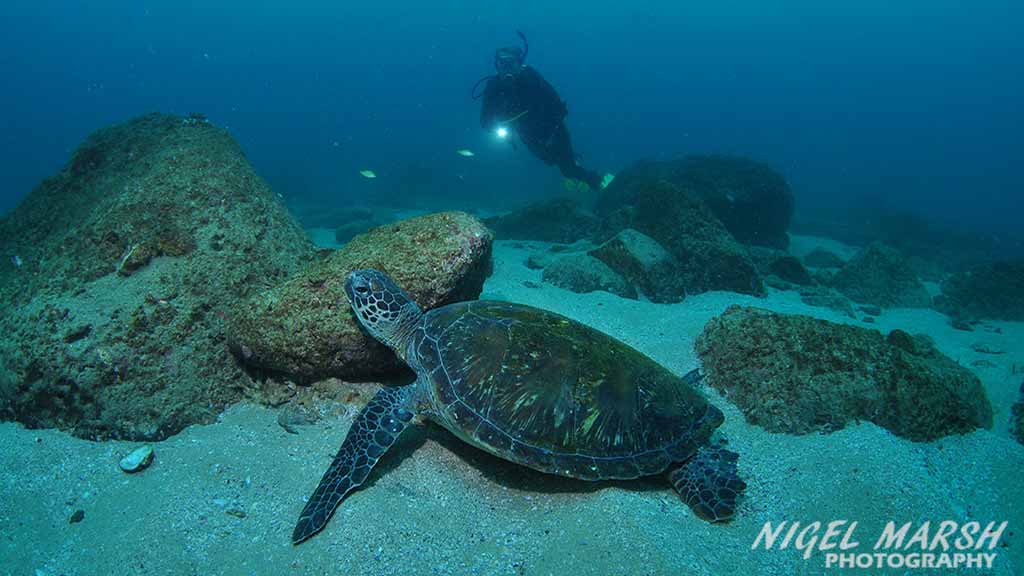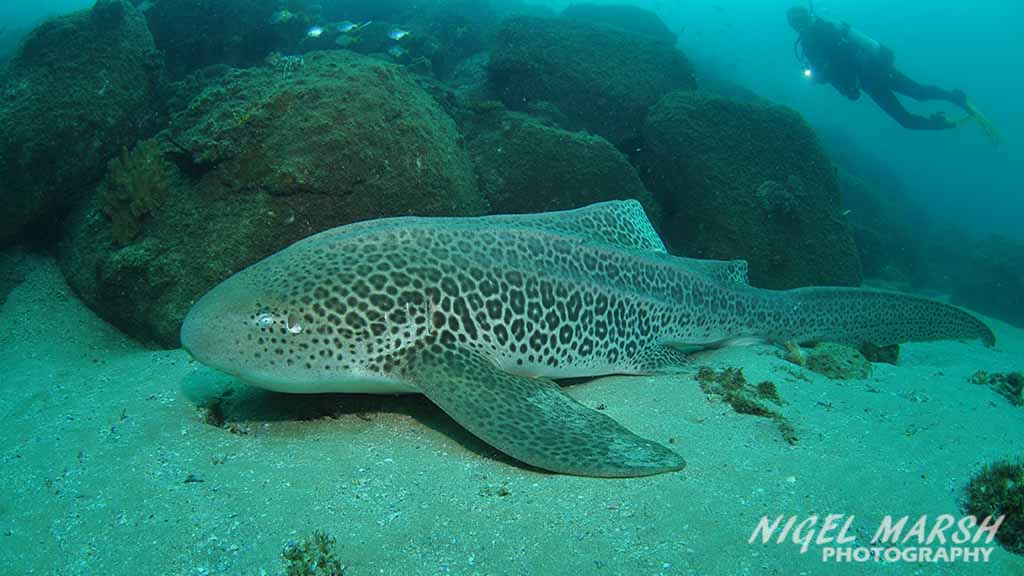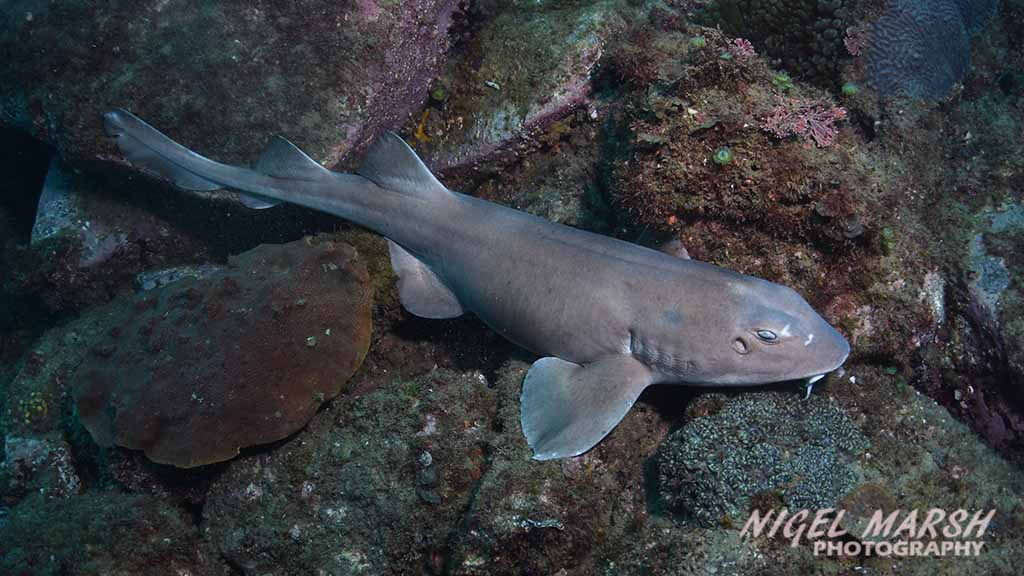At the southern end of the Gold Coast, off the town of Tweed Heads, is a small rocky island swarming with subtropical marine life. Named Cook Island, after the famous English explorer, the island was once known as Turtle Island, as its rocky reefs are home to a very large population of friendly turtles.
There are many wonderful dive sites off Australia’s Gold Coast, a stretch of coastline encompassing southern Queensland and northern New South Wales, but Cook Island is easily one of the best all-weather sites. Located 600m off Fingal Head, Cook Island is a boat dive and easily accessible in a quick run out from the Tweed River. All around the island are rocky reefs in depths from 5m to 20m, with the Northern Ledges one of the best places to see numerous turtles.
This site, on the normally sheltered northern side of the island, features a rocky boulder wall that drops from 5m to 12m. On the top of this wall are coral gardens, sea anemones full of anemonefish, abundant small reef fish and countless green turtles. Turtles gather in this area to get cleaned, and it is common to see a dozen or more lingering in the shallows. These turtles are very accustom to divers, allowing you to get very close for photos or just to observe these ancient marine reptiles.
The boulder wall is where most divers spend their time observing moray eels, wobbegongs, crayfish, bullseyes, gropers, leopard blennies, blind sharks, boxer shrimps, pipefish, lionfish and even pineapplefish. This site is a great spot for macro photography with abundant small critters and a good variety of colourful nudibranchs, including exotic Spanish dancers.
While many divers stick to the wall, the sand flats beyond are worth exploring as many rocky outcrops provide a home to large and small marine life. This area is a good place to see spotted and ornate wobbegongs, sleeping turtles, blue-spotted maskrays, blotched fantail rays and large white-spotted shovelnose rays. Over summer numerous leopard sharks gather here and can be seen resting on the bottom. A closer look on and around these rocks will also reveal flatworms, nudibranchs, scorpionfish, velvetfish, cowry shells, ghost pipefish, mantis shrimps and the occasional seahorse.
Off the very northern end of Cook Island is Mary’s Rock, a pinnacle of rock surrounded by gutters, walls and caves in depths to 20m. Pelagic fish, wobbegongs, turtles, eagle rays, gropers and even grey nurse sharks are seen around Mary’s Rock. The rocky reefs in this area are also covered in lovely hard and soft corals, plus pretty sponges, black coral trees, gorgonians, ascidians and sea ferns.
The eastern side of Cook Island is only dived when the seas are calm. In this area are numerous ledges and caves in depths from 6m to 12m. Take a torch to explore these caves as it will help to spotlight the resident banded wobbegongs, loggerhead turtles, brown-banded bamboo sharks, crayfish, soapfish, squirrelfish, slipper crays, lionfish, gropers and pineapplefish.
The southern side of Cook Island features another boulder wall dropping to 15m. Lovely hard and soft corals are found at this site, and common reef fish include varieties of morwong, wrasse, angelfish, butterflyfish, grubfish, hawkfish, pufferfish, gobies, bennies and leatherjackets. This is also a good spot to see green and hawksbill turtles, wobbegongs and pelagic fish. There is also a small bommie in this area that manta rays visit over the summer months to get cleaned.
My favourite site off the western side of Cook Island is a site called Turtle Bommie. This rocky reef is always a great dive with wobbegongs, turtles, stingrays, stingarees, crayfish and abundant reef fish. On my most recent dive here I also encountered a very rare Colclough’s shark, a close relative of the more common blind shark that is only found in a small area off southern Queensland and northern New South Wales. Over the years I have only seen four of these elusive creatures.
Diving Cook Island is possible at any time of the year, with visibility typically 8 to 15m and generally at its clearest after a spell of southerly winds. The island is a marine reserve and a number of dive operators visit Cook Island each weekend, and being an all-weather site there is always somewhere to dive at this incredible location.
Interested in diving Cook Island? Call Tweed Sea Sports on (07) 5524 3683.
If you enjoyed this post, you might also like The Wonders of Merimbula Wharf.







